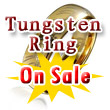History of Tungsten
Introduction of history of tungsten
In 1779 Peter Woulfe examined the mineral now known as wolframite and concluded it must contain a new substance. Scheele, in 1781, found that a new acid could be made from tungsten (a name first applied about 1758 to a mineral now known as scheelite). Scheele and Berman suggested the possibility of obtaining a new metal by reducing this acid. The de Elhuyar brothers found in acid in wolframite in 1783 that was identical to the acid of tungsten (tungstic acid) of Scheele, and in that year they succeeded in obtaining the element by reduction of this acid with charcoal. Tungsten occurs in wolframite, scheelite, huebnertie, and ferberite.Important deposits of tungsten occur in California, Colorado, South Korea, bolivia, Russia, and Portugal. China is reported to have about 75% of the world's tungsten resources. Natural tungsten contains five stable isotopes. Twenty one other unstable isotopes are recognized. The metal is obtained commercially be recucing tungsten oxide with hydrogen or carbon. Pure tungsten is a stelel-gray to tin-white metal. Very pure tungsten can be cut with a hacksaw, and can be forged, spun, drawn, and extruded. The impure metal is brittle and can be worked only with difficulty. Tungsten has the highest melting point of all metals, and at temperatures over 1650C has the highest tensile strength. The metal oxidizes in air and must be protected at elevated temperatures. It has excellent corrosion resistance and is attacked only slightly by most mineral acids. The thermal expansion is about the same as borosilicate glass, which makes the metal useful for glass-to-metal seals. tungsten and its alloys are used extensively for filaments for electric lamps, electron and television tubes, and for metal evaporation work; for electrical contact points for automobile distributors; X-ray targets; windings and heating elements for electrical furnaces; and for numerous spacecraft and high-temperature applications. High-speed tool steels, Hastelloy(R), Stellite(R), and many other alloys contain tungsten.
Tungsten carbide is of great importance to the metal-working, mining, and petroleum industries. Calcium and magnesium tungstates are widely used in fluorescent lighting; other salts of tungsten are used in the chemical and tanning industries. Tungsten disulfide is a dry, high-temperature lubricant, stable to 500C. Tungsten bronzes and other tungsten compounds are used in paints.
More introduction of history of tungsten visit our site.






 sales@chinatungsten.com
sales@chinatungsten.com